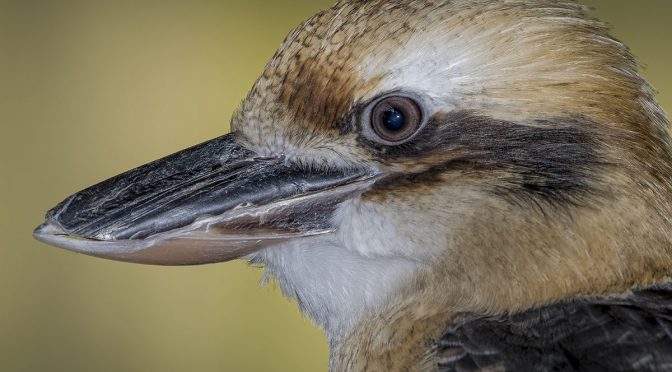This article features some images captured at Bird Kingdom using the MC-20 teleconverter with flash. These photographs are from my archives.
NOTE: Click on images to enlarge.

When photographing captive birds in indoor settings we often face rather poor lighting conditions. If allowed by the facility, it can be an interesting experience to use a teleconverter along with flash.

I have always enjoyed getting in tight to bird subjects so I can capture head and feather details . The short minimum focusing distance of the M.Zuiko PRO 40-150 mm f/2.8 coupled with the M.Zuiko MC-20 teleconverter is a great combination for this type of photography.

I find birds very expressive, each with their own personality. When possible, I choose subjects that I can frame with an unobstructed, somewhat distant background. This helps to reduce distracting shadows caused by the flash.

Depending on the backgrounds chosen, dramatically different compositions can be created. This can be seen when comparing the image above with the one below.

I specifically look for birds that are up against very strong sunlight. This causes them to be back lit, with the subject bird often looking like a black, almost totally unexposed shape in my viewfinder. In these instances using the focus clutch on my M.Zuiko PRO 40-150 mm f/2.8 comes in handy. The result of combining the harsh back lighting with the use of a flash, results in photographs like the one above.

The photograph above is another example of using this technique.

Using the M.Zuiko MC-20 teleconverter with flash can help to capture interesting body positions when birds are in tricky lighting conditions. I noticed a couple of speckled mousebird (above) positioned against a darker background, with bright sunlight streaming in from both sides.

This species can be fairly skittish. I was pleased that my M.Zuiko FL-700 WR recharged rapidly so I could quickly capture a range of photographs.

The speckled mousebird was moving from branch to branch. Using a zoom lens with a teleconverter allowed me to adjust my focal length so I could shoot between branches in the foreground.

When opportunities present themselves, I love capturing portraiture style images of birds.

Using the MC-20 teleconverter with a flash also allows for full body images of birds positioned in poor light, both in indoor and outdoor situations.

It is important to test your camera gear configuration in advance to make sure that the lens/teleconverter combination used isn’t too long physically, as this can cast shadows from your flash hitting the end of your lens, onto subject birds.

Before leaving Bird Kingdom, I spent some time in the main aviary, specifically looking for portraiture style image opportunities.

When photographing birds, especially when moving in fairly tight to them, I use Center Weighted Average metering.

Using a lens that has a short minimum focusing distance is also helpful when trying to create these types of images.

My favourite image during this particular visit to Bird Kingdom happened when a Laughing Kookaburra landed on a hand railing less than 3 metres away. I was able to slowly move in a bit closer, and positioned the head of the bird against an appropriate background. The result was the photograph above.
Technical Note
Photographs were captured hand-held using camera gear as noted in the EXIF data. Images were produced from RAW files using my standard process.
How you can help keep this site advertising free
My intent is to keep this photography blog advertising free. If you enjoyed this article and/or my website and would like to support my work, you can purchase an eBook, or make a modest $10 donation through PayPal. Both are most appreciated. You can use the Donate button below. Larger donations can be made to tom@tomstirr.com through PayPal.
Word of mouth is the best form of endorsement. If you like our website please let your friends and associates know about our work. Linking to this site or to specific articles is allowed with proper acknowledgement. Reproducing articles, or any of the images contained in them, on another website or in any social media posting is a Copyright infringement.
Article and images are Copyright 2020 Thomas Stirr. All rights reserved. No use, duplication or adaptation of any kind is allowed without written consent. If you see this article reproduced anywhere else it is an unauthorized and illegal use. Posting comments on offending websites and calling out individuals who steal intellectual property is always appreciated!


Beautiful pictures Thomas! For my taste just a little bit too much flash. Maybe underexposing of -0.3 or -0.7 would have vade a more natural effect?
Best regards,
Massimo
Hi Massimo,
Glad you enjoyed the images. I never used flash much in the past so I’m still experimenting. Some underexposure is a possibility.
Tom
Beautiful photos. A question. If you were photographing birds in the wild would you still be using center weighted average focusing?
Joel
Hi Joel,
I use Center Weighted Average metering the majority of the time. It really depends on the size and position of the bird in the composition and the quality of the light. If the bird is a part of a larger scene then I may use ESP. Spot metering is something that I sometimes use if a bird is in a high contrast situation.
Tom
Very useful review.
Thank you.
I’m glad the article was helpful for you Blondeel!
Tom